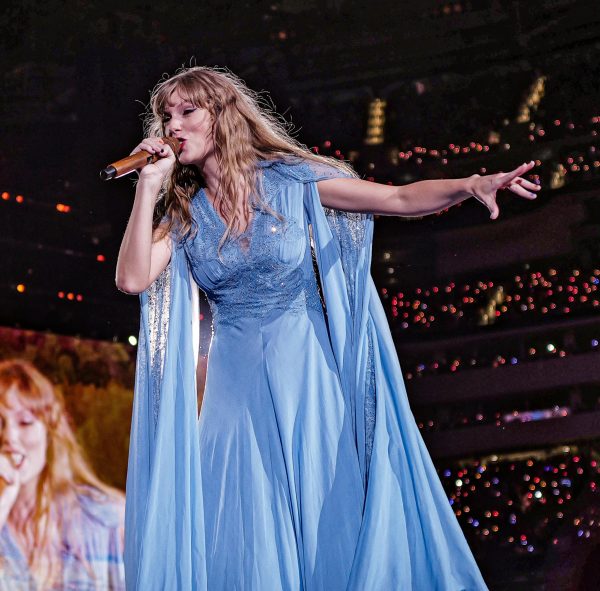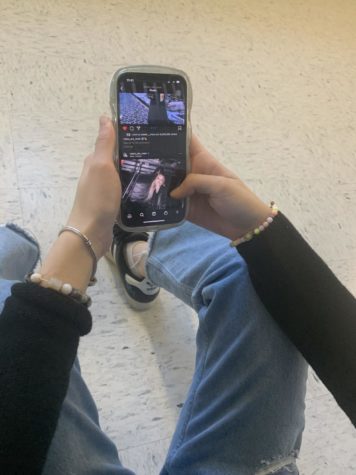Teenagers Experience Toxic Dangers on Social Media
A curious student scrolls on her TikTok page, watching video after video of a new trend that has surfaced online. The student feels intrigued as she sees a young girl in the video holding her breath until she passes out due to lack of oxygen. Once she sees this young girl pass out a feeling that can only be described as gut-wrenching overcomes her. However, this feeling goes away once she sees how many views this post has received; 1.5 million, and growing by the minute. She thinks to herself, the blackout challenge” might be worth it for 1.5 million views.
Social media is a place where many young people gravitate to when they are bored or just want to see the current trends around them. However, social media can also be a dangerous platform because when teenagers see these trends, they may want to join in.
“I have observed several dangerous challenges on social media platforms, I think they’re ridiculous,” sophomore Namrita Jit said. “But, people are so crazy about wanting to become internet famous that they are willing to put their physical and mental well-being on the line.”
In a popular TikTok trend called The Milk Crate Challenge, which is now banned, people were videotaped attempting to climb milk crates stacked in a pyramid-like structure. However, when stacked together the crates can lose stability and the challenge left several participants with multiple injuries.
“I have noticed new dangerous trends like the crate challenge,” junior Kiarah Vera said. “If teenagers don’t stop this, dangerous social media trends will continue to cause harm. People will continue to be sent to hospitals and maybe even death for smaller children who get inspired by these trends.”
These trends can cause serious injuries and some can even be fatal. Teenagers are naturally more impulsive and likely to act before thinking through all of the consequences, which is due to the development of the teen brain, especially the part which handles rational thought. The frontal and prefrontal cortexes aren’t accessed with the same speed as an adult brain, which causes more impulsive behavior.
In addition to teenagers being exposed to dangerous trends, social media also tends to take serious or tragic events and create a mockery of them. Fourteen year-old boy Tyre Sampson, who died when he fell from a rollercoaster ride, has had his death turned into a TikTok trend. For this trend, the video starts with a view of the ride, along with the caption “Aren’t you gonna stop going on rides after what happened to that boy?” After this a second caption then appears, “I’m livin’ for the thrill of it.”
“Making fun of the trauma someone’s been through has never and will never be funny, but people will desperately do whatever brings them the most amount of attention,” Jit said. “Those trends hurt so many people, especially those who went through something similar, further making social media a more toxic environment.”
Will Smith slapped Chris Rock at the Oscars earlier this year and the incident went viral on social media platform instantly. However, people made jokes and memes about this violent incident instead of taking it seriously. This was a crime that Will Smith committed against Chris Rock, yet no one talks about that, only how funny it was.
“I’ve noticed that social media reacts by turning it into a joke and making it seem less severe than it actually is,” Jit said, “They don’t care about what happened but rather how they can turn it into something funny.”
Another danger of social media for teenagers is the tendency for teenagers or other users to mock students with disabilities. Students with disabilities are more likely to be cyberbullying victims, perpetrators, or compared to students without disabilities.
“Autism, Tourette’s Syndrome, and ADHD to name a few,” sophomore Alice Yi said. “I’ve heard and seen people confess that they’ve gotten disgusting messages about how they should kill themselves and are a mistake to society for something out of their control. [As] I mentioned before, [this] has led people to psychiatric hospitals, suicide, and quitting the platform they were using.”
On social media platforms, bullying is achieved in several ways. Many people leave negative comments, make harmful videos talking about disabilities, and some even go as far as completely mocking a person’s disability.
“I have noticed people making fun of those who have physical or mental disabilities for how they look or act,” Jit said. “The autism community is targeted [the] most I believe.”
Finally, social media has set a high standard on unrealistic or perfect beauty by showing how people are supposed to look. According to a survey of 1000 people by FHEHealth, social media is the biggest influence on how women feel about their bodies at 22.8%. It is the second highest influence for men at 17%. In addition, “88 percent of women compare themselves to images in the media, with half saying the comparison is unfavorable.”
“Beauty standards trends I’d say are quite dangerous,” sophomore Alice Yi said. “They easily influence those younger and those becoming more self conscious of how they look, dress, and present themselves. These beauty standards only magnify the flaws someone younger could have and cause them to become insecure and develop things like eating disorders.”












